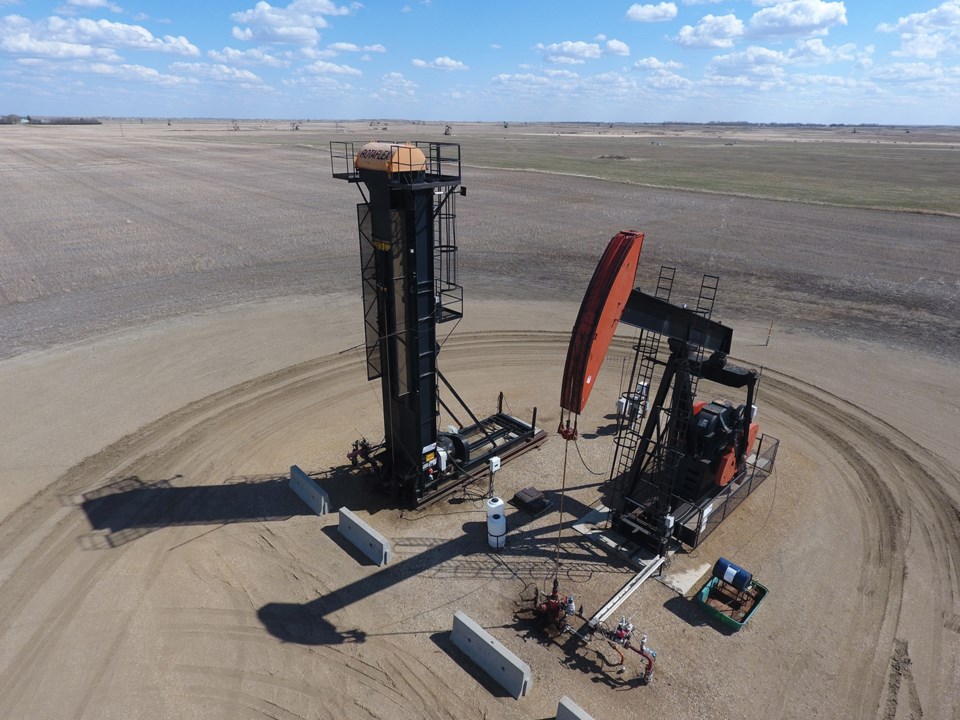(Daily Oil Bulletin) ‚Äì Ã˝announced a 5.6 per cent increase to its monthly dividend.
The dividend will climb to $0.0285 per share ($0.342 per share annualized) from $0.027 per share ($0.324 per share annualized) effective for the May 2019 dividend, payable in June.
The dividend increase represents three per cent of anticipated free funds flow in 2019 and demonstrates confidence in its ability to generate free funds flow along with a commitment to return cash to shareholders.
Defensive strategy
As a result of the wide Canadian crude oil price differentials experienced in the fourth quarter of 2018, Whitecap elected for a defensive first quarter capital program. Capital spending in the first quarter was only $124.9 million, representing approximately 28 per cent of its capital budget for 2019. This compares to $182.6 million invested in the first quarter of 2018, representing 41 per cent of the capital budget for 2018. Whitecap's commitment to capital discipline and strong operational performance resulted in a total payout ratio of 98 per cent after capital spending and dividend payments during the quarter.
Whitecap continues to have a strong balance sheet with net debt at $1.3 billion on debt capacity of $1.7 billion. On strip pricing, the company anticipates net debt to annualized fourth quarter funds flow to be 1.3 times as the company ramps up production to 77,000 ‚Äì 79,000 barrels of oil equivalent per day ( boepd). Ã˝
Financial highlights
Funds flow for the quarter was $161.2 million compared to $138.8 million in Q4 18, an increase of 16 per cent (18 per cent per share). It was down, though, from $164.8 million the previous year.
Net loss climbed to $52.56 million from $7.76 million the previous year. Revenue dropped in Q1 to $343.24 million from $368.05 million.
Average production of 70,666 boepd with capital expenditures of $124.9 million in Q1 19 compared to 73,120 boepd with capital expenditures of $182.6 million in Q1 18. Average production decreased three per cent and capital expenditures decreased by 32 per cent.
The company continued to layer on additional hedges mainly with costless collars for downside price protection and upside participation. Forty-two per cent of the company's second half 2019 crude oil production (net of royalties) and 12 per cent of 2020 crude oil production (net of royalties) are hedged using a combination of swaps and costless collars. Ã˝
Operational update
The company executed on a defensive capital program in the first quarter investing $124.9 million in the drilling of 56 (52.1 net) wells of which six (5.1 net) were waterflood injection wells, continuing its strategy of mitigating corporate production declines through the optimization of its enhanced oil recovery (EOR) projects.
West Central Saskatchewan
The company drilled a total of 23 (22.9 net)Ã˝Ã˝horizontal wells in the first quarter including two targeted horizontal water injection wells in Kerrobert. Results from both drilling and waterflood optimization programs are exceeding expectations. This improved performance positively impacted first quarter production by over 10 per cent compared to budget forecast for this area. The company has an additional 77 (71.3 net) horizontal wells planned for the remainder of the year.
–°¿∂ ”∆µwest Saskatchewan
The company drilled a total of 17 (13.7 net) wells in the first quarter including nine (8.0 net) horizontal oil wells in the Atlas, one (0.5 net) in the Success, one (0.7 net) in the UpperÃ˝, five (4.0 net) in the Lower Shaunavon and one (0.5 net) horizontal injector. Drilling results on average have met expectations with the exception –°¿∂ ”∆µ the Lower Shaunavon program. This program has exceeded productivity expectations with an average IP60 rate of 122 boepd, 39 per cent higher than its production expectation of 88 boepd. This is another significant step in de-risking and improving the economics of Ã˝the company‚Äôs Lower Shaunavon inventory of more than 200 locations.
The company has a further 49 (34.3 net) wells planned for the remainder of the year including seven (5.4 net) in the Lower Shaunavon.
–°¿∂ ”∆µeast Saskatchewan
Capital spending in the first quarter was focused on maintenance, optimization and CO2 purchases. Its 2018 infill and CO2 roll-out programs continue to perform at or above expectations, and Whitecap anticipates commencing its next Weyburn drilling program in the second half of 2019.
Northwest Alberta and British Columbia
In the first quarter, the company drilled five (5.0 net) wells in the Deep Basin, all of which are now on production. Early results are encouraging and are anticipated to meet or exceed expectations.
Whitecap reported a 10 per cent cost savings on its WapitiÃ˝Ã˝completions compared to prior programs by utilizing new completion strategies and anticipate further savings with the larger second half 2019 program. The company‚Äôs 18 (18.0 net) wells planned for the remainder of the year in the Deep Basin.
First quarter capital activity in Boundary Lake was focused on waterflood optimization with its drilling program anticipated to start in the fourth quarter of 2019 with the drilling of two (2.0 net) wells.
West Central Alberta
In West Pembina the company drilled five (4.5 net) horizontal wells, including three (2.6 net) injection wells to enhance production and recovery in its operated waterfloods. It has an additional nine (8.3 net) horizontal production wells planned for the second half of 2019 in West Pembina.
In Ferrier the company drilled four (4.0 net) horizontal wells in the quarter with an average IP30 rate of 562 boepd, 88 per cent higher than production forecasts. The company has another four (3.3 net) horizontal oil wells planned in Ferrier for the remainder of 2019. It had similar success in Willesden Green where the company drilled two (2.0 net) wells in the quarter with an IP30 rate of 717 boepd for the one well that has more than 30 days of production. This compares to its production expectation of 351 boepd.
Ã˝




